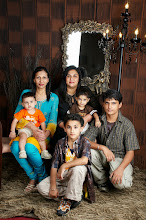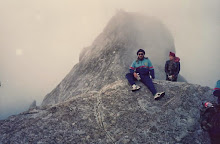
 THE Malaysian Hockey Federation (MHF) must not forget that ‘boys will be boys’, when they preside over the antics on Malaysia’s top strikers in the Management Committee meet ing today.
THE Malaysian Hockey Federation (MHF) must not forget that ‘boys will be boys’, when they preside over the antics on Malaysia’s top strikers in the Management Committee meet ing today.MHF office-bearers must also keep in mind that when boys are placed in a camp for a prolonged period, mischief is bound to surface.
And mischief is how this scribe would describe Azlan Misron, Tengku Ahmad Tajuddin and Ismail Abu’s mis adventures that brought shame to their otherwise good conduct in training and tournaments.
Azlan, who had been entrusted with the skipper’s arm band before, and Tengku Ahmad are said to have broken curfew when in training for the Champions Challenge II in June.
Ismail Abu excused himself from weights training to repair his car but was found in a gaming arcade instead.
Today, the Management Committee will listen to what the coaches have to say about the three players and decide if they deserve a rap on the knuckles for being boys, or are referred to the disciplinary board for punishment.
But the discussion must not only focus how to punish the trio, but also have a look at the centralised training or camping system that Malaysia have been practicing for the past decade.
Players like Chua Boon Huat, 29, have spent the majority of their life for the last 10 years in and out of training camps, which sad to say, have yet to land Malaysia a single gold medal even in major qualifiers.
National coach Tai Beng Hai is all for centralise training, as through experience he knows that de-centralising players will see a drastic drop in fitness as Malaysian players are well-known for being a lazy lot when it comes to breaking sweat.
But even Beng Hai admits that more can be done to break the monotony of being in camp, but because of back-to-back tournaments, he never had the time to inject adventure this season, but has plans to make it more exciting next year.
Just ask him for his input and ideas, instead of punishing the coach by placing an axe near his neck, as a bizarre incentive to win gold in the New Zealand Qualifier.
Then there is confirmation from many players, after a random poll, that they are fed-up with team-mates who do not take training seriously, especially the fitness part.
The players lamented that those who do not take training seriously still get selected, and these are the players who throw in the towel in the first half of a match even though Malaysia are only losing by one goal, leaving only a handful carry their load.
They seem to feel that since there are very few talent in the reserve pool, they will be selected for the next tournament anyway.
So, while boys will be boys, the MHF officials must be man enough to look into the bigger picture on why curfew was broken and why Ismail decided to play truant, and why there is discontent among players in the final phase for an important Qualifier.
Lets take a leaf from the Disco 10 episode in 2003, which also involved Tengku Ahmad.
The Disco 10 were banned for one year by the MHF DB for breaking curfew during the FIH Under-21 tournament in Gneizno, Poland in Aug 2003.
But after an appeal by then juniors coach Sarjit Singh, they were given a life-line to play in the 2004 Junior World Cup and some of them like Kelvinder Singh and S. Selvaraju, are now pillars in the national seniors.
Lets be man enough to admit and rectify the shortcomings, and work for gold in New Zealand.






